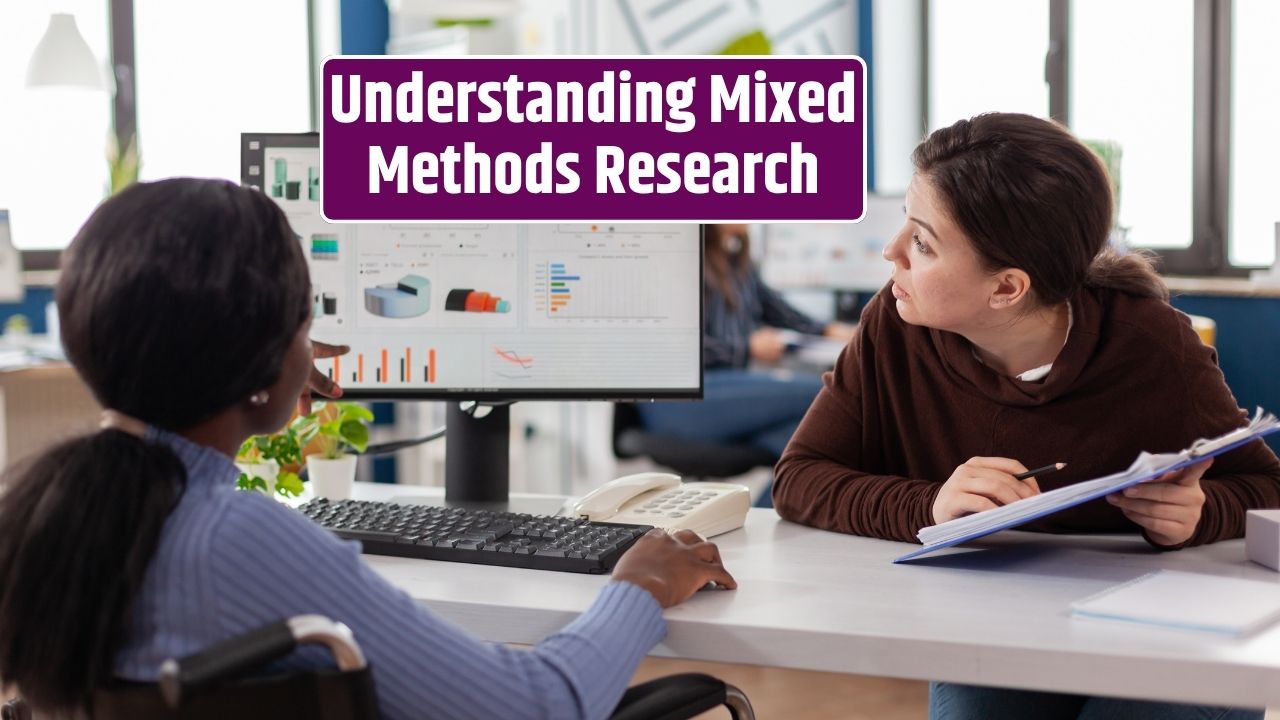Mixed methods research is a powerful approach that combines both quantitative and qualitative research techniques in a single study. It provides a more complete understanding of research questions—especially in fields like public policy, social services, health, and education—where numbers alone don’t tell the full story.
If you’ve ever wanted to know how many people a program helped (quantitative) and why it worked for some but not others (qualitative), you’re already thinking like a mixed methods researcher.
Table of Contents
What Is Mixed Methods Research?
Mixed methods research integrates quantitative data (numbers, statistics, measurable outcomes) with qualitative data (interviews, focus groups, personal stories) to explore a research question from multiple angles.
Why use both?
Because while quantitative methods help you measure what is happening, qualitative methods help you understand why it’s happening.
Core Components of Mixed Methods Research
| Component | Quantitative | Qualitative |
|---|---|---|
| Data Type | Numerical (e.g., survey scores, percentages) | Textual/audio (e.g., quotes, themes, stories) |
| Purpose | Measure outcomes, trends, patterns | Understand experiences, opinions, meaning |
| Tools Used | Surveys, tests, administrative data | Interviews, focus groups, observations |
| Analysis | Statistical analysis | Thematic or narrative analysis |
Mixed methods combines these elements in a structured way to produce more holistic insights.
Common Mixed Methods Designs
| Design | Description |
|---|---|
| Convergent Parallel | Collect qualitative and quantitative data at the same time, then compare results |
| Explanatory Sequential | Start with quantitative data, follow up with qualitative to explain results |
| Exploratory Sequential | Start with qualitative data, then test findings with quantitative methods |
| Embedded | One method is nested within another (e.g., interviews in a larger survey) |
Simple Examples of Mixed Methods Research
Public Health Program
- Quantitative: Survey 1,000 patients to measure vaccine uptake.
- Qualitative: Conduct interviews with 20 people who refused the vaccine to explore reasons why.
Education Program Evaluation
- Quantitative: Analyze test scores before and after tutoring.
- Qualitative: Interview students and teachers about their learning experience.
Job Training Program
- Quantitative: Track job placement rates and earnings over 6 months.
- Qualitative: Hold focus groups with participants to understand challenges they faced during the program.
Housing Stability Project
- Quantitative: Use administrative data to track eviction rates by ZIP code.
- Qualitative: Interview tenants and landlords to understand barriers to stable housing.
Benefits of Mixed Methods Research
- More complete picture: Combines strengths of both qualitative and quantitative approaches
- Increased validity: Confirms results through multiple lenses (triangulation)
- Explains “why” behind the numbers: Helps interpret statistical findings
- Flexible and adaptive: Useful in complex real-world policy and program settings
When to Use Mixed Methods
Mixed methods are ideal when:
- You want to evaluate both outcomes and experience
- You’re exploring a new or complex topic
- Stakeholders need clear evidence and human stories
- Quantitative results are inconclusive or unclear on their own
Best Practices in Mixed Methods Research
- Clearly define your research questions. Make sure you need both types of data.
- Plan integration early. Don’t treat one method as an afterthought.
- Use consistent sampling logic. Align samples so they complement each other.
- Allocate time and resources. Mixed methods take more effort—but yield better insights.
- Be transparent in reporting. Show how both data types informed your conclusions.
Quick Recap Table
| Aspect | Quantitative | Qualitative | Mixed Methods |
|---|---|---|---|
| Data Collected | Numbers | Words/Stories | Both |
| Tools Used | Surveys, stats | Interviews, focus groups | Combo of both |
| Purpose | Measure how much, how often | Understand why, how, meaning | Understand full context and multiple dimensions |
| When to Use | For large samples, general trends | For deep insights, new themes | For complex questions needing depth and breadth |
Mixed methods research is not just a trend—it’s a best practice for understanding real-world programs and policies. When used thoughtfully, it helps researchers, nonprofits, and governments design more responsive, effective solutions by grounding decisions in both data and lived experience.
FAQs
Do I need to be an expert in both methods to use mixed methods?
Not necessarily, but it helps to collaborate with someone skilled in the method you’re less familiar with.
Is mixed methods more expensive or time-consuming?
It can be, but the added value in deeper insights and more accurate conclusions often outweighs the cost.
Can small nonprofits use mixed methods?
Yes. Even simple surveys combined with a few interviews count as mixed methods—and can be done affordably.
Do funders support mixed methods research?
Absolutely. Many funders appreciate the added rigor and depth that mixed methods bring to program evaluations.


























